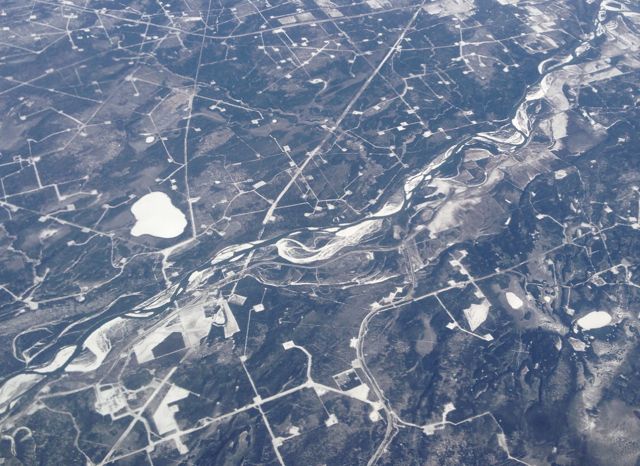I was pleased to participate in the Hestia2@Stanford event held December 4-5, 2013 at Stanford’s Center for Spatial and Textual Studies (CESTA). The program, titled Visualizing Complex Networks, included several researchers from Stanford as well as a couple of digital humanities initiatives in nearby San Francisco. The plan was to share progress and prospects for some local projects that “explore network analysis and uncertainty in data from a number of different perspectives,” touching on topics and methodologies related to the Hestia project.
Read More»Enrico Daga
Back in November Hestia2 held its second seminar in a place where the sun really does always shine (see below): Stanford, California. There was a very good reason, in addition to being able to wear a t-shirt in November, for holding a seminar on Digital Humanities in Stanford. With its campus in Palo Alto, Stanford shares a location with a number of high-tech household names, including Apple, Google and Facebook, while smaller start-ups in the San Francisco Bay Area are but a short Caltrain ride away. One of these, Farallon Geographics, has recently worked with the Getty Conservation Institute and World Monuments Fund, to produce an open-source, web-based, geospatial information system for cultural heritage inventory and management, called Arches, showing the massive potential for collaboration between private digital enterprise and the public cultural sector, including higher education.
Read More»The Center for Spatial and Textual Analysis is proud to host the next Hestia2 event, on November 4-5 in Wallenberg Hall at Stanford University. During this free one and a half day seminar we will explore network analysis and uncertainty in data from a number of different perspectives. It will also be an opportunity to take a sneak preview of a number of new and exciting projects.
Read More»
Some of the initial discussions that led to the Hestia project were largely motivated by the growing employment of innovative and alternative mapping techniques in geography – a discipline which, arguably, has provided the main home for theoretical debates in cartography. A number of recent academic papers in human geography journals have provided a more explicit engagement with the relationship between narratives and maps; as they might be of interest to the readers of this blog I have summarized them here.
Read More»Last month we organised a seminar on linked data and spatial networks in Southampton. Videos and slides of presentations of the seminar are now available on The Connected Past website. There are hours of footage and books-worth of slides on there for you to enjoy! This was only the first in a series of Hestia2 events. More info on Hestia2, future seminars and online resources can be found on our new website. Looking forward to seeing you at one of our future seminars!
Read More»In spite of the frustrations documented in the last post, our trial was a truly useful experiment in making academic research more open to and usable for a broader audience, and we can be hopeful about indications for future productive collaborations. We believe that the positive outcomes outweighed the few negatives, and that the obstacles were not intractable.
Students felt that they could engage with the primary source material, which is a rare opportunity for ninth-graders. As a consequence, students felt a stronger sense of ownership of their own study, thereby supporting Dewey’s goals for the democratization of education. In time, we should be able to see whether students also reinvest their interest in Classics as a subject that provides them with unique opportunities to participate as researchers.
Read More»It was not all plain sailing, however. Inevitably, we encountered problems and frustrations with conducting this trial. What Elton and I learned, and what we document here, may help to inform how to design and conduct future collaborations, because the obstacles largely address infrastructural concerns, or pragmatically, “getting work done on the ground.” The researchers themselves felt that they were not fully able to carry out the trial as thoroughly as they might have because of the school syllabus and timetable.
Read More»Encouragingly, the results showed that the students enjoyed using Hestia, particularly the ability to scan the ancient locations and find out about what Herodotus says about them using GoogleEarth. Initially we thought that was accounted for by the fact that GoogleEarth was new to students and that they enjoyed the novelty of seeing the world from satellite. Rather than GoogleEarth’s novelty, most of the students were already seasoned users of the application. So it appears that Hestia was building upon their technological familiarity.
Read More»One of the ways that my collaboration with Hestia added to my own “pedagogical toolbox” as a teacher was working with Elton to design the survey. The survey itself had to target a student audience and, at the same time, deliver robust information for the research team. I had a lot of experience and interest in writing good questions and assessments to evaluate student mastery, but I did not have a lot of experience thinking in survey metrics.
Read More»As I concluded the first installment of this story, we left off with Elton and myself considering a robust pedagogical framework that would guide our decisions about involving the students during their classroom time. We were hoping that the lessons would be interesting but also would convince educators that our goals aligned with other school goals for curriculum and school improvement. Therefore, some of the consequential, overarching philosophical questions we pondered were: Can a digital lab work? How can it work? What consequences might it have? What potential might there be to share or to extend the practice?
Read More»















